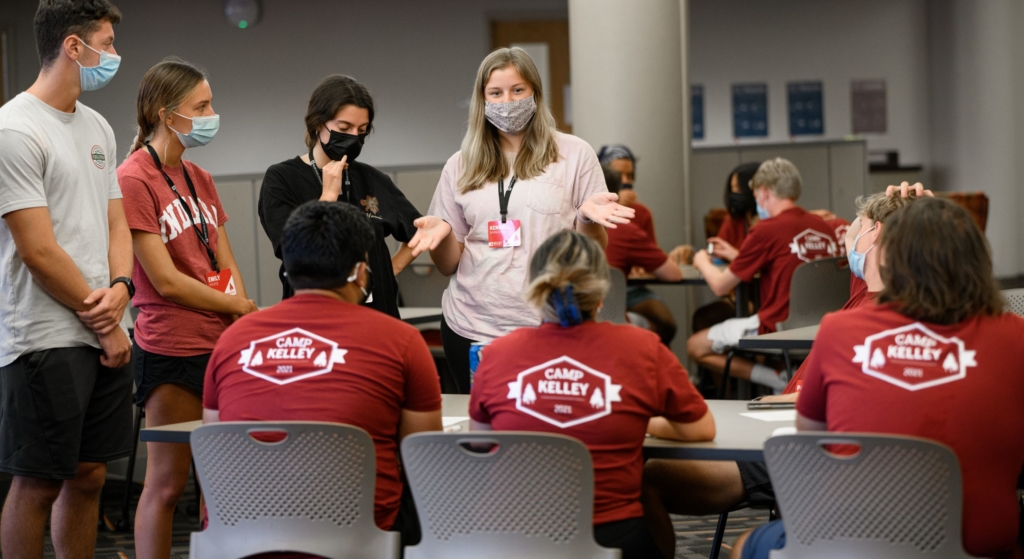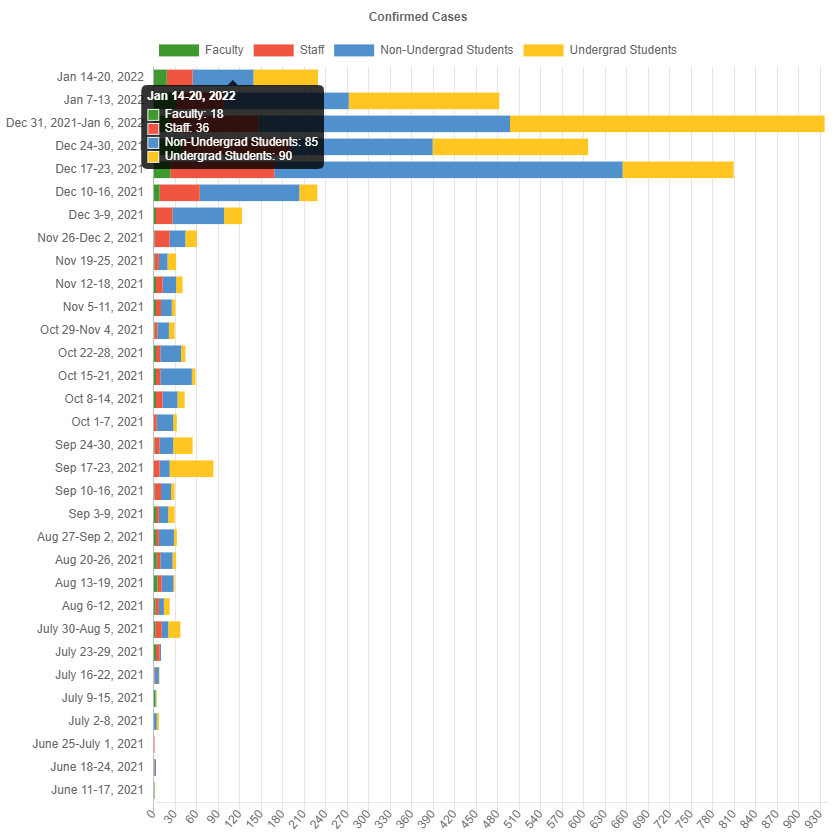
Students of the Kelley School of Business prepare for the Camp Kelley Case Competition. Kelley started the spring semester in-person as scheduled. (Courtesy photo)
A DIFFERENCE IN OMICRON’S ONLINE PIVOTS
In spring 2020, at the start of the pandemic, many schools abruptly switched to online instruction for the first time, often creating frameworks on the fly for classes. As cases fell over the summer, vaccines were introduced, and masks became more available and their effect against spread more understood, a lot of colleges and universities had returned to at least some form of in-person or hybrid learning by fall 2021. With the surge in omicron, many reverted back to online learning.
But the omicron pivot was different in at least two respects: First, schools had done it before, and both students and faculty knew what to expect. Second, the pivot came with end dates, emphasizing that virtual classes were temporary. The meteoric rise, and subsequent fall, of omicron cases has helped schools justify short-term shifts away from in-person learning to give the virus a chance to burn itself out after students’ return to campus.
“We’ve talked about flattening the curve in the past, and that’s so important right now with our health care infrastructure being so overwhelmed. If we can hold tight for a relatively short period of time while we get through the current surge, we hope that there will be a bit more flexibility a few weeks from now when the downstream social consequences of our individual actions are less dire,” Michael Klompas, professor of population medicine at Harvard Medical School and an infectious disease physician and hospital epidemiologist at Brigham and Women’s Hospital, told The Harvard Gazette on Jan. 12.
University and business school communities are, as a whole, younger, healthier and less likely to develop a serious case of COVID than the population at large. Most students are also vaccinated, with many colleges reporting vaccination and even booster rates in the high 90s. These factors make the online pivots easier to sell to students and staff. They give omicron the chance to slow down in surrounding communities, while protecting a commitment to in-person learning for the remainder of the term.
At Kellogg School of Management, which mirrors protocols at Northwestern University, students began the semester online on January 3, observing a short, defined two-week long modified quarantine called “Wildcat Wellness” to allow for enhanced testing, Senior Communication Coordinator Haley Robinson tells P&Q. Students returned to in-person classes on January 18.
The two-week online period appears to have worked in curbing the volume of new cases. According to Northwestern’s COVID-19 dashboard, new case counts dropped significantly after reporting 936 new cases the week of December 31-January 6. The next week, new cases fell by more than half to 482 and to 229 new positives between January 14-20. See chart below.

A screenshot of Northwestern University’s coronavirus cases from the school’s COVID-19 dashboard. Notice the sharp rise, but falling, in new cases beginning mid-December.
Next page: Forging ahead in-person + A new approach to coronavirus











Questions about this article? Email us or leave a comment below.